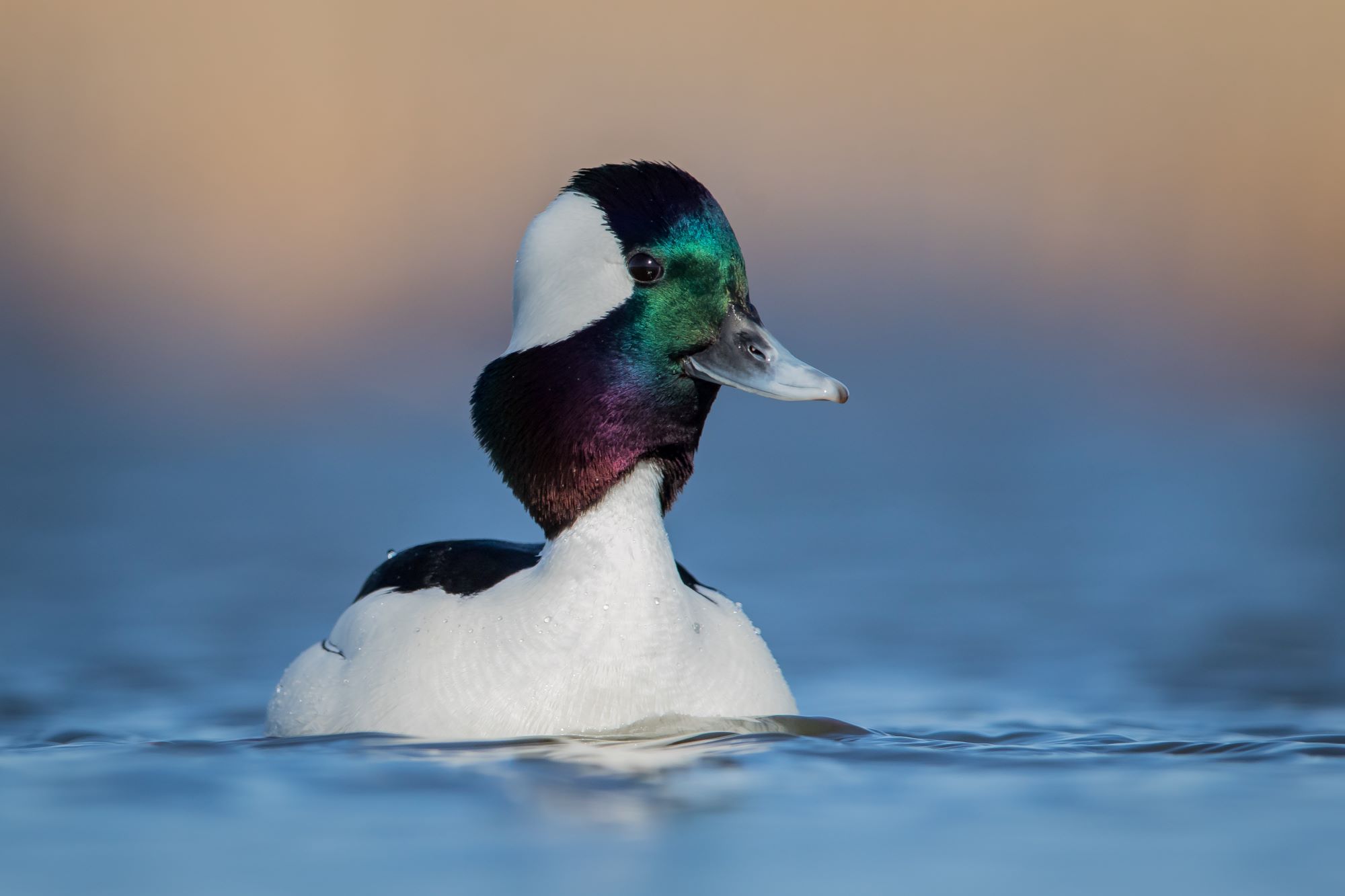
Buffleheads in Utah
Buffleheads, a small and charismatic species of diving duck, are a delightful sight in Utah's waterways, especially during the winter months. Known scientifically as Bucephala albeola, these ducks are easily recognizable by their compact size and distinctive plumage. Male Buffleheads have a striking appearance with iridescent green and purple heads, a large white patch that extends from the eye to the back of the head, and black and white bodies. Females are more subdued, with dark brown heads and grayish bodies, but they also have a small white patch on their cheeks, making them identifiable. In Utah, Buffleheads are commonly found in open waters of lakes and reservoirs, where they dive for their food. They are winter visitors, migrating from their northern breeding grounds to spend the colder months in the state.
The diet of Buffleheads consists predominantly of aquatic invertebrates, such as insects and crustaceans, which they catch by diving underwater. They are particularly adept at foraging in deeper water bodies, using their small size and agility to navigate and catch prey. In Utah, the presence of Buffleheads in lakes and reservoirs is an indicator of healthy aquatic ecosystems, as they require clear, unpolluted waters with abundant food sources. Their feeding habits contribute to the balance of these ecosystems, controlling populations of aquatic invertebrates.
While Buffleheads breed in the forested regions of northern North America, they are regular winter visitors to Utah. During this time, they provide a unique opportunity for birdwatchers and nature enthusiasts to observe their diving behavior and social interactions. Buffleheads often form small flocks, which can be seen diving synchronously in search of food. These winter gatherings are crucial for the ducks' survival, as they conserve energy and provide safety in numbers from potential predators.
Conservation of aquatic habitats is vital for the survival of Buffleheads during their winter stay in Utah. These environments provide essential resources for feeding and resting, crucial for the ducks as they endure the colder months. Threats such as habitat destruction, pollution, and water diversion can significantly impact the quality of these habitats. Efforts to protect and restore lakes and reservoirs in Utah are essential in ensuring the health and continued presence of Buffleheads and other migratory waterfowl.
For bird enthusiasts in Utah, the arrival of Buffleheads each winter is an eagerly anticipated event. Their striking appearance, playful behavior, and agility in the water make them a favorite among birders. Observing Buffleheads dive and resurface on Utah's lakes and reservoirs is not only a fascinating spectacle but also a reminder of the interconnectedness of migratory bird species and the importance of conserving natural habitats along their migratory routes. The presence of these ducks adds to the state's rich biodiversity, making Utah a prime destination for winter birdwatching and highlighting the importance of maintaining healthy aquatic ecosystems for wildlife.